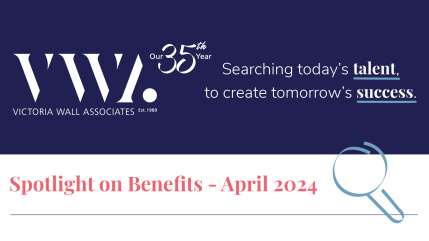Finding Interview Success with the STAR Technique
By Sophia Voce

You’ve made that big decision to find a new job. You’ve hunted through job ads, given over your Sunday evening to tailoring your CV (always!) and written an awesome covering letter. You submit them and breathe a sigh of relief. Then you wait…
Yes! They would like to see you for an interview! For the briefest of moments you celebrate and then the cold dread sets in at the thought of the interview itself…
Admittedly some find interviewing easier than others, but for many of us, the process can be daunting, giving us bouts of anxiety and a few sleepless nights ahead of the big day (which doesn’t help!).
It sounds so obvious but the more you prepare the more you’ll be prepared! The job description is key here as it gives you lots of clues as to the kind of experience and competencies the recruiter will be looking for and enables you to prepare answers for the potential questions that may arise.
So how do you structure your responses and how do you remember all the details you want to share with them on the day? Interviews are conducted in many forms from the free flowing conversational style, to the more formal competency based questions.
In this article we are going to talk you through the STAR technique. A well-known method to help you structure your answers to competency based questions in a clear and concise way.
Be Prepared
There’s that word, ‘prepared’ again! Begin the process by going through the job description with a fine-tooth comb. This will help you to identify work experiences that you can use as great examples of your competencies in each area.
The STAR Technique
Once you have a better idea of the type of questions you think are likely to come up, you can apply the STAR technique to structure your answers:
The STAR acronym stands for:
Situation: Set the scene and give it some context - What? Where? When? Who?
Task: Give details of the task you were faced with or any goals set
Action: What action did you take to achieve these goals?
Result: Conclude your answer with the positive results of your actions
Situation - Set the scene and give details of the event or situation you previously found yourself in. It could be from a past job, a volunteering position or an event from your education that you feel is relevant. Try to be specific rather give a generalised description from the past. Keep it short and to the point – ideally one or two sentences.
Task - Here is where you need to describe your responsibilities in the example situation and briefly explain the challenges you faced or any goals you were set. Stay focused on your role, not the action taken. That comes next…
Action - Now you need to explain to the recruiter what steps you took to achieve the goals detailed in the task. It’s ok to acknowledge if you worked with a team, but remember again to focus on your role and avoid talking about the actions of your colleagues or group. Try to include details such as your assessment of the situation, if you used any particular software and how you executed your strategy. Be careful to avoid too many acronyms or company-specific jargon!
Result - This is a job interview and you are here to impress! This is your moment to bring to life the fantastic results you achieved as a result of your actions. If possible, quantify them and explain how they directly impacted the business. For example 15% uplift in sales or 20% increase in web traffic. This is also a good time to share any lessons you learnt along the way.
Below is a great example of the STAR technique taken from an article in The Guardian:
SITUATION: "In my previous role as a business development officer, my company set the target of increasing leads by 50% in six months.”
TASK: "I was tasked with increasing the company’s outreach through email to generate leads from 30 companies operating in the tech sector.”
ACTION: "I worked directly with the marketing team to create an email that I could send to cold leads in the tech sector. I used LinkedIn to find the details of the most appropriate people to contact within each organisation and went through our old email list to start new conversations with old contacts.”
RESULT: "I sent the email to 200 new organisations in the tech sector, which led to 60 conversations. That produced 40 new leads, which exceeded the company’s goal by 25%.”
On a final note, let’s revisit that word, ‘prepared’…
Whatever you do, give yourself enough time to do your homework! Go through the job description and pull together as many relevant STAR examples as you can. Allowing yourself this time will help to shake off any pre-interview nerves and you can go in feeling confident that you can handle whatever the interviewer throws at you.
Related news
Keeping you up to date with our latest news and views.

By Sophia Voce
Best Practices for Conducting an In-Person Job Interview- A Guide for…

By Nick Coleridge-Watts and Manjinder Kang
Spotlight on Benefits - April 2024

By Sophia Voce
Stress Awareness Month - The Power of Small Steps for Workplace…

Get in touch
Get in touch to find out more about our vacancies, roles or how we can help bring the best talent to your business.